Hello guys, I really hope everyone is doing great. I'm doing fine, too.
after a long time, I am writing a blog about the art which was made by me.
In today's blog, I'm going to show you a recent black-and-white sketch I did with the art of shank and bansuri.
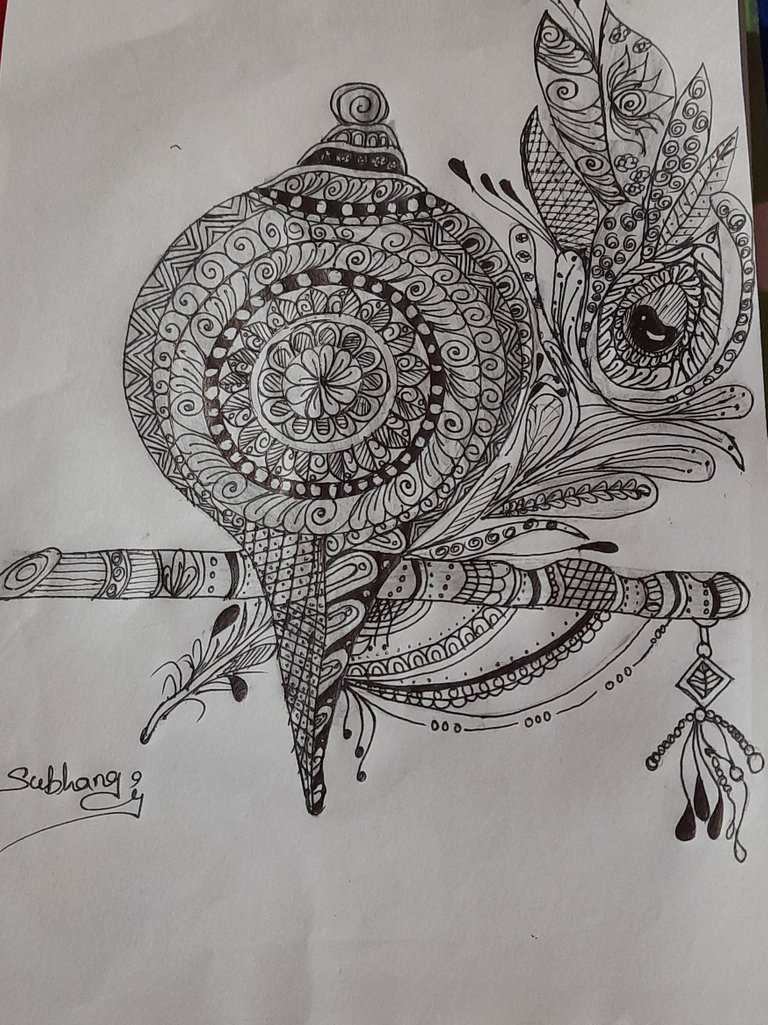
I believe you will enjoy my painting.
So let's examine the artwork from today.
I attempted to organize the processes as I went along so that you could see how I sketched the picture. Each step is described below. I'm hoping you like it.
required resources
- White paper,
- a colored pen,
- geometric patterns
This is the art of Shankh and Bansuri.

The flute, primarily a lyrical instrument, has a clear, brilliant sound with a recognizable warmth, refinement, and subtlety to its tone. The flute's use of pricey components like gold, silver, and jewels during manufacturing is another characteristic.

The woodwind family of instruments, which includes the flute, is used in classical music. Flutes are aerophones, which means they produce music by vibrating a column of air like all woodwind instruments do. A flute, on the other hand, is a reedless wind instrument that derives its sound from the flow of air over an aperture, unlike woodwind instruments with reeds. Flutes are classified as edge-blown aerophones in the Hornbostel-Sachs classification of instruments. A flutist is a musician who plays the flute.
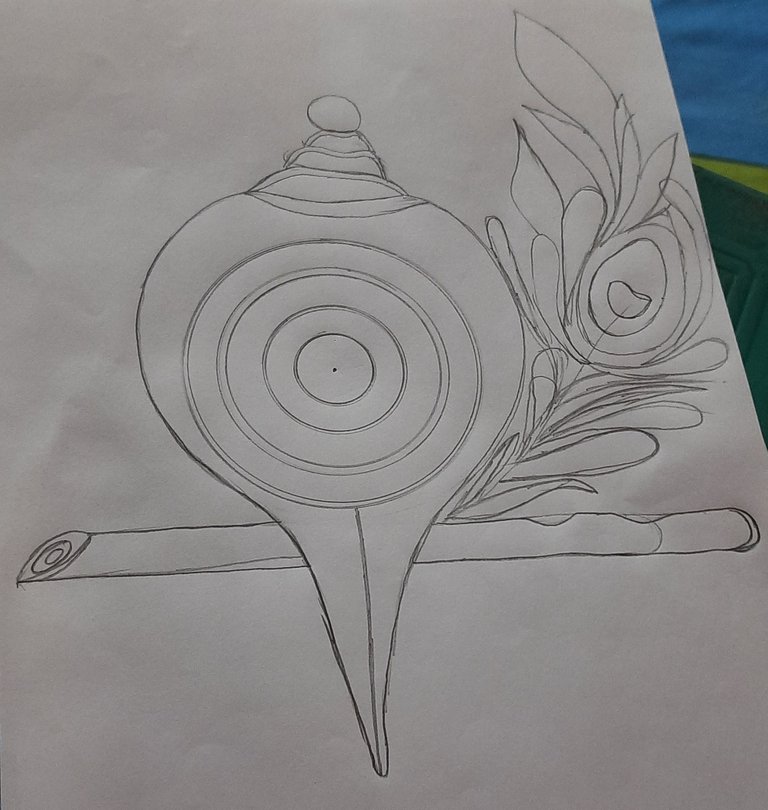
The shankh, a wind instrument used in religious ceremonies, was created from a conch shell. This instrument might be located in Orissa. The shankh is regarded as having profound religious importance in Hinduism despite having only a few musical applications.
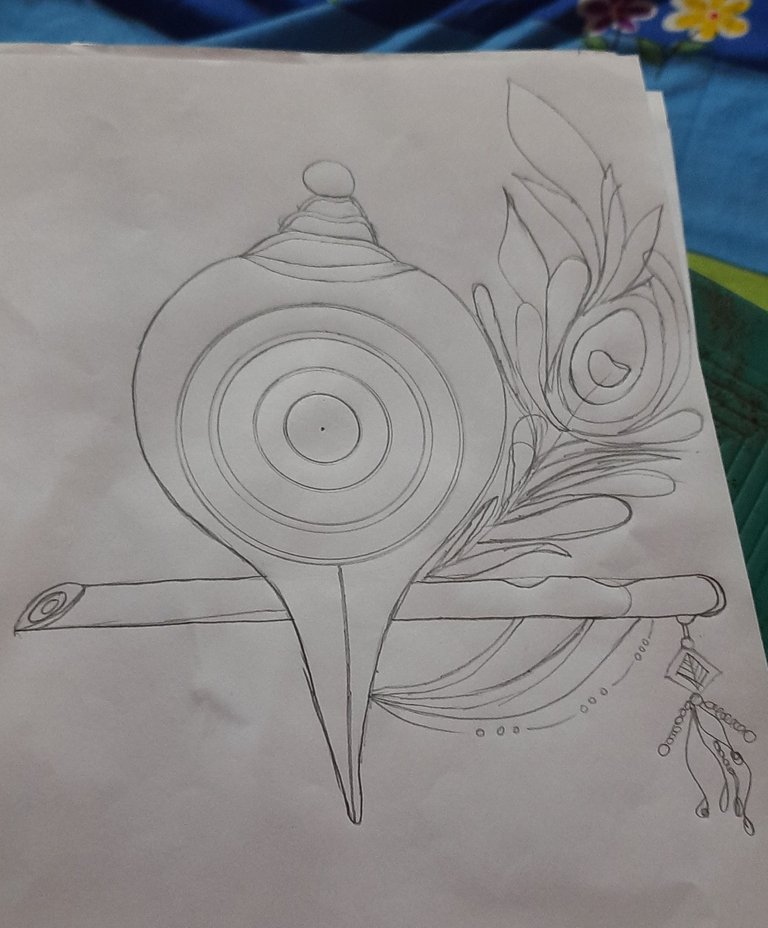
Conch shells are displayed in every Hindu temple. For other religions, it also has a major spiritual significance. According to Hindu sacred books, conch shells first came on land during the Samudra Manthan. It appeared just before the goddess Lakshmi was to arrive. Even after accepting it, Lord Vishnu has been shown holding it in one of his hands.
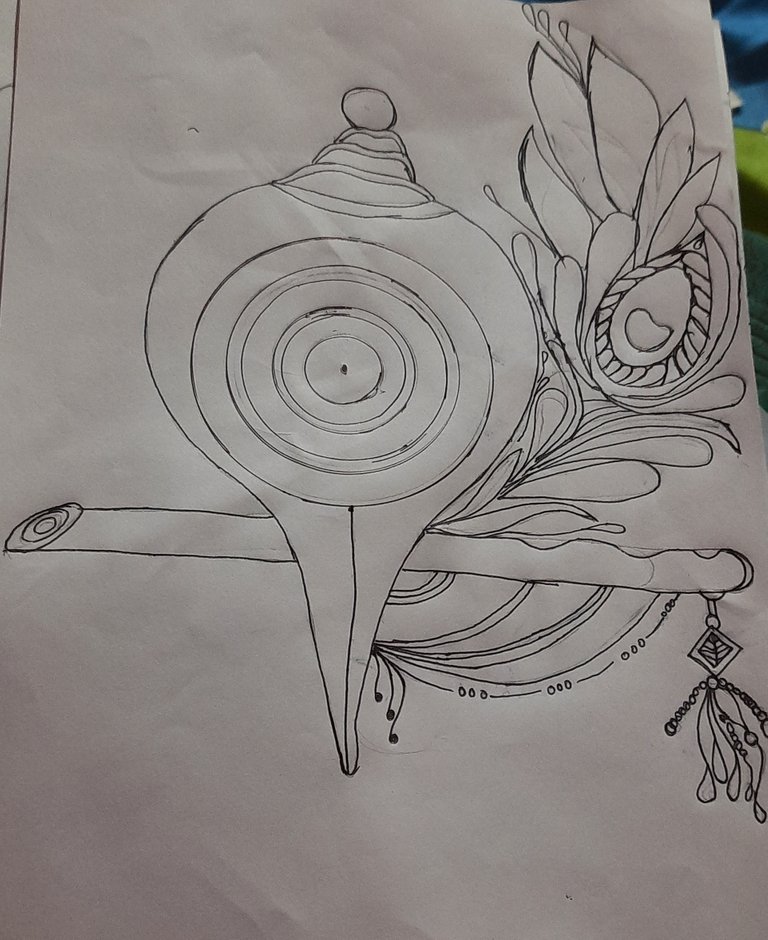
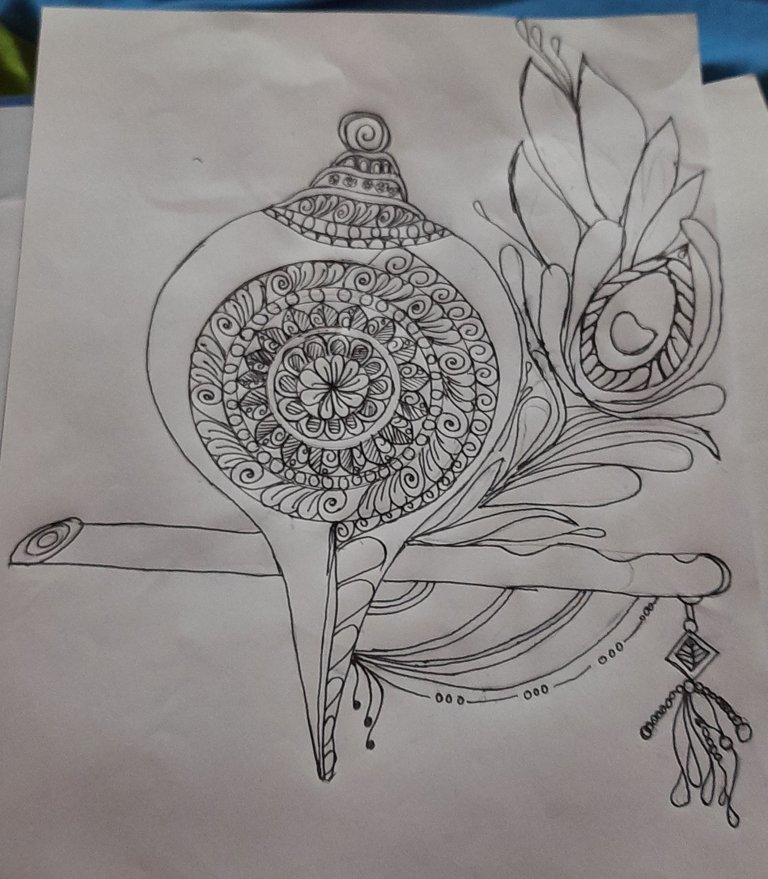
It's believed that many Hindu deities reside in conch shells. Lord Brahma, the Sun God, and the Moon God, for example, are depicted on the surface of the shankh. Aditya, Varun, Soma, Vayu, and Agni are positioned to the right. Chandra Dev and Surya Dev are the two presiding deities. Varun is the god of the conch, and Prajapati is seated in the back. The river goddesses Ganga and Yamuna, are displayed upfront. Thus, the conch shell has great religious importance and is revered.
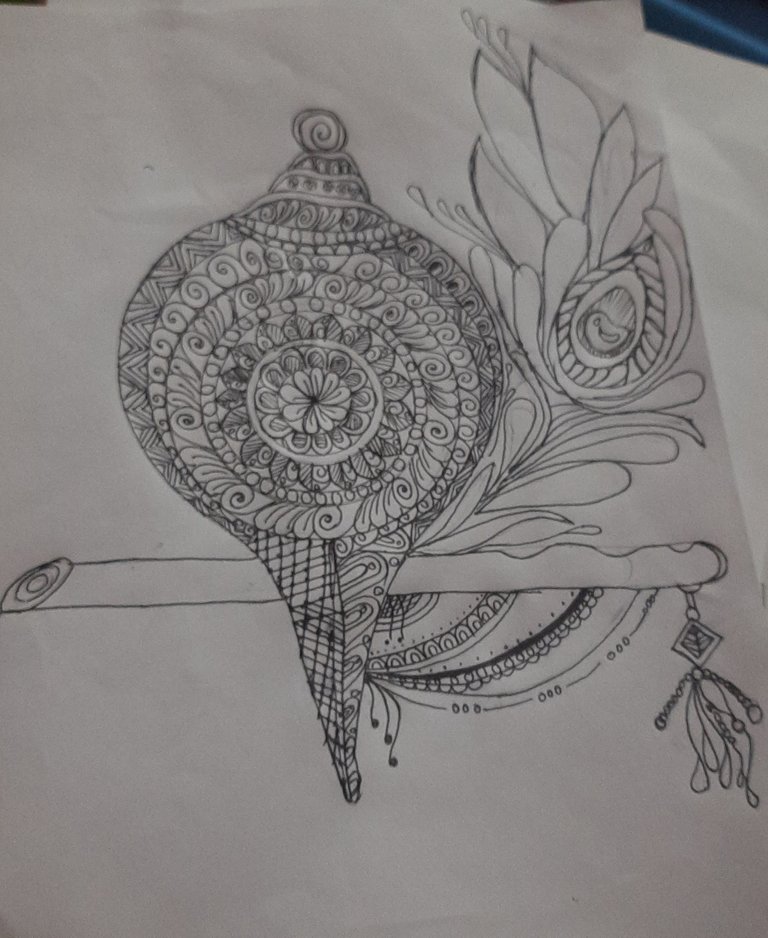
The shankh is considered auspicious and its sound brings peace, prosperity, and happiness to the family. Shankh or Shankham in Sanskrit means Shum, which means good things, and Kham means water. Shankham literally means "shell with holy water".
To make a trumpet or wind instrument, a hole will need to be drilled near the top of the shank point. When air is blown through this hole, it travels through the shankha's coils, producing loud, sharp, high-pitched sounds. This sound is why the shankha is used as a war horn to summon helpers and friends. Shanka continued to be used in combat for a long time. The sound it makes is called Shankanad.
